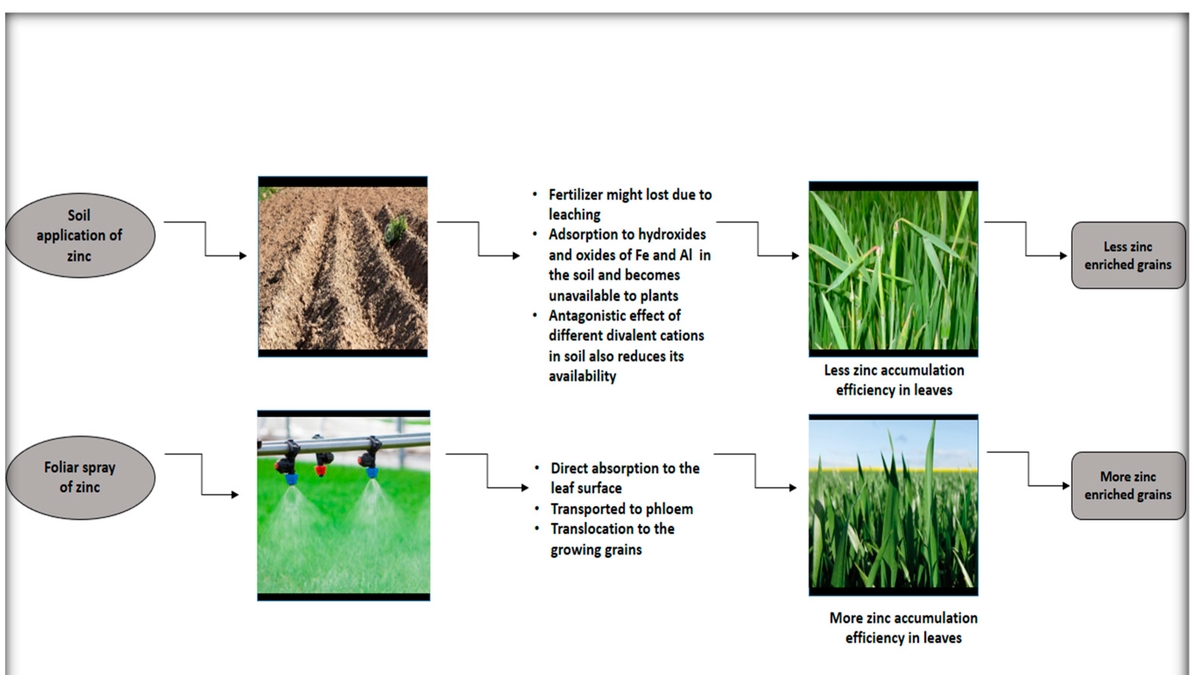
Wheat is a staple grain for many populations worldwide and plays a pivotal role in global food security. However, wheat production faces significant challenges due to various environmental factors, including drought and salinity stress, climate change, and soil nutrient deficiencies. One critical aspect of wheat nutrition that has been gaining attention is zinc absorption, specifically how the root system architecture (RSA) of wheat affects its ability to absorb zinc from the soil and translocate it to the grain. This understanding is pivotal in addressing zinc malnutrition, prevalent in many populations dependent on wheat as a staple food.
Understanding Root System Architecture and Zinc Absorption
A recent study explored the impact of RSA on zinc absorption in wheat, involving the screening of 100 wheat varieties for grain zinc content and evaluation of zinc association with RSA attributes. The findings revealed significant variations in grain zinc content, a right-skewed frequency distribution for RSA attributes, and positive correlations between grain zinc content and RSA attributes. Such results demonstrate the importance of characterizing RSA in identifying zinc-responsive wheat varieties.
Further insights into the subject reveal that the structure of wheat roots indeed significantly impacts the plant’s ability to absorb zinc from the soil. Therefore, understanding this relationship can be instrumental in developing wheat varieties that are more effective in absorbing zinc, thereby helping combat zinc malnutrition.
The Impact of Environmental Stress on Wheat
Environmental stress, such as drought and salinity, can significantly impact the RSA and consequently, the nutrient absorption capabilities of wheat. Drought stress, for instance, has physiological and biochemical consequences on wheat production, affecting the plant’s tolerance mechanisms. Similarly, salinity stress can reduce root morphological characteristics and root hydraulic conductivity of wheat varieties, thereby affecting their ability to transport nutrients.
Potential Solutions: Exploiting Microbial Interactions
In the face of these challenges, research has highlighted the potential of microbial interactions in improving wheat’s resilience to environmental stress and enhancing its nutrient absorption. For instance, arbuscular mycorrhizal fungi (AMF) have a symbiotic relationship with most terrestrial plants, including wheat. They expand the root’s absorption region and improve the plant’s ability to absorb nutrients. Additionally, halotolerant bacteria can promote plant growth in saline soils used for wheat cultivation.
The interaction of AMF and other beneficial microorganisms with plant roots could potentially be exploited to increase crop output in a sustainable and environmentally friendly way. Such strategies are particularly crucial given the growing need for sustainable wheat production in the face of climate change and degrading soil quality.
Conclusion
In conclusion, the RSA of wheat plays a crucial role in its ability to absorb zinc from the soil, which has significant implications for addressing zinc malnutrition. Understanding this relationship, along with the impacts of environmental stress and potential solutions through microbial interactions, can provide valuable insights for improving wheat production and nutritional quality. The need for such research is more pressing than ever, given the challenges that wheat production faces in relation to climate change and soil degradation.
